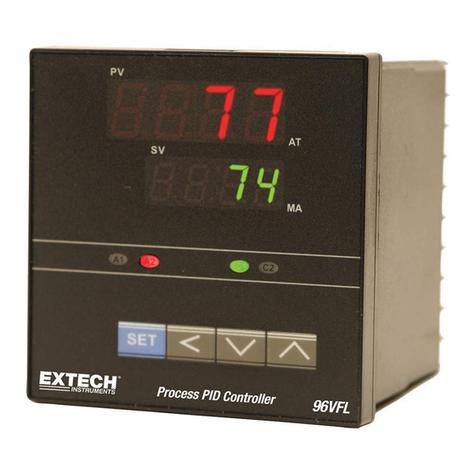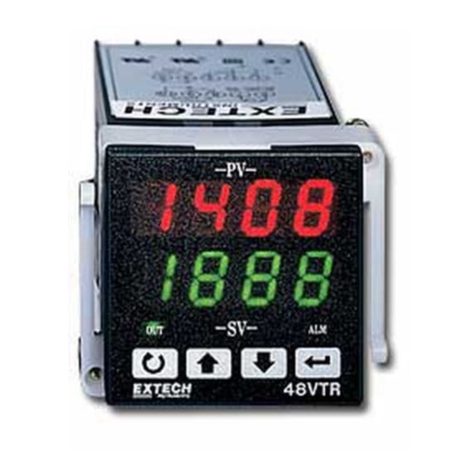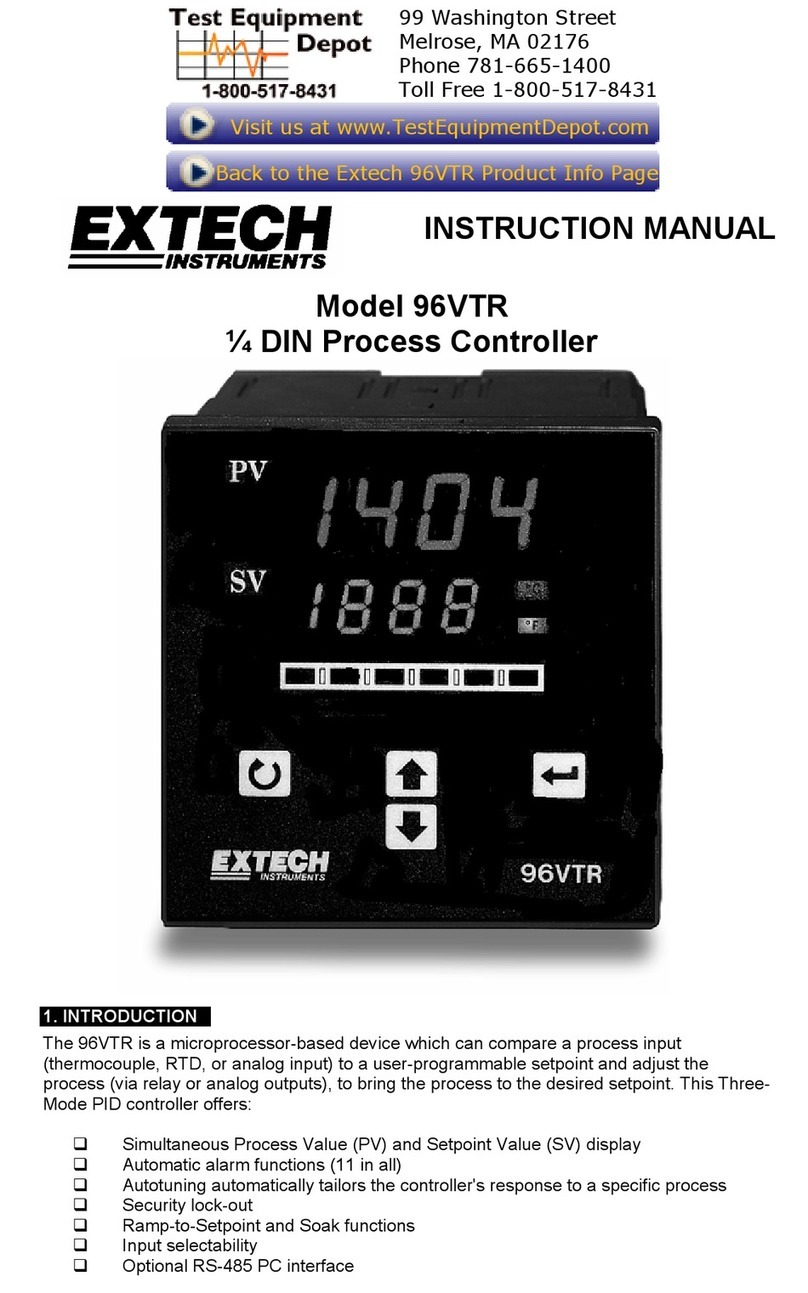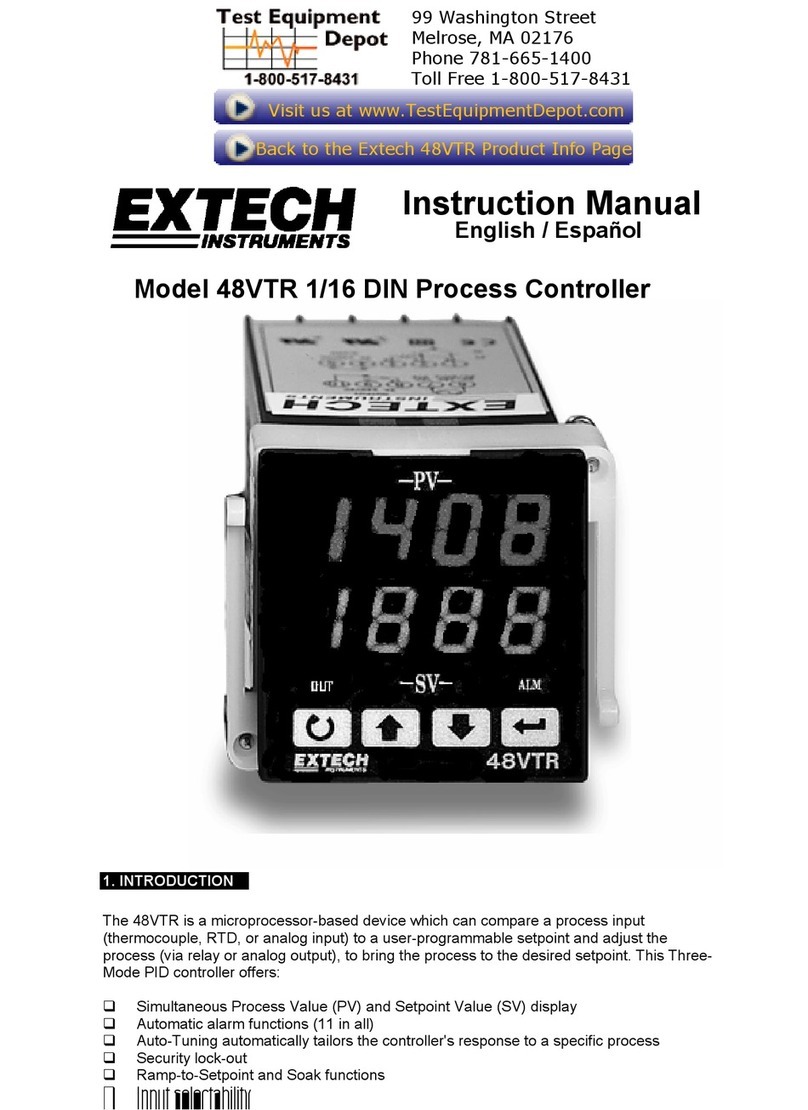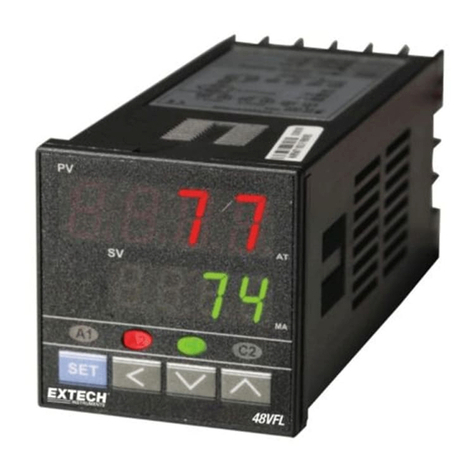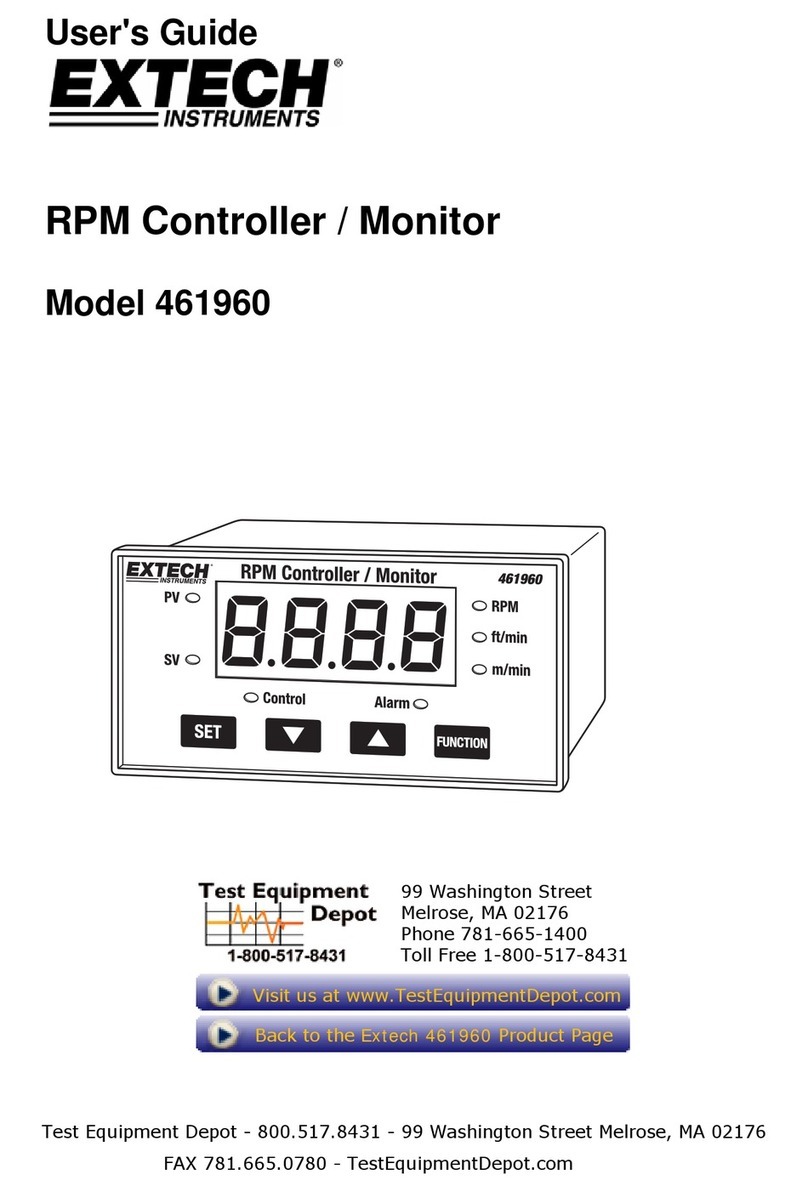
Model 48VTR - Version 5.0 – January 2006
4
Controller Overview
Controller Wiring
The controller must be wired before use. The controller’s input, outputs, and AC power are
connected via its rear terminals. Refer to the Wiring Section for details.
Programming Menus
The controller has four (4) Programming Menu Levels. Each menu includes a series of
parameters that customize the controller to meet the user’s needs. The menu structure and
parameter descriptions are detailed in the Programming Menu Levels Section. Check the
factory default settings for each parameter and only change a setting if necessary.
Inputs
The controller accepts an input from a Thermocouple, RTD, or Analog signal. Wire the
input as shown in the Mounting and Wiring Section. The measurement (PV for Process
Variable) is displayed on the controller’s top LED readout in red.
Setpoint Value (SV)
The Setpoint Value (SV) is the target value. For example, in an oven application the
desired oven temperature is the SV. This SV is changed using the front panel up/down
arrow keys. The SV is shown on the controller’s lower LED display digits in green.
Control Output
The control output is wired to an external control device such as a heater, valve, or switch.
See the Mounting and Wiring Section for details. The controller automatically controls an
external device to bring the Process Variable (PV) in line with the Setpoint Variable (SV).
Available outputs are Relay, DC trigger, and Analog Output.
Tuning
The controller must be tuned for every new application. Run the Automatic Tune function
after the controller is wired and ready to go. The Auto Tune function matches the response
of the controller to the characteristics and dynamics of the process it is controlling. Refer to
the Auto Tuning Section for details on automatic tuning. Although auto tuning will be
sufficient in most cases, there may be times when manual adjustments are required.
Qualified personnel can Manually Tune the controller using the PID parameters in the 2nd
Menu Level. Note that improper tuning can cause sever process disturbances. Always use
Auto Tuning when possible.
Alarm Output
The controller has one alarm output relay that can be used to switch on a light, sound a
buzzer, shut down a heater, etc. at a programmed alarm setpoint. A list of alarm functions
can be found in Appendix A. Use the ‘A1Fu’ parameter in the third programming level to
set the desired alarm type. Use the ‘A1SP’ parameter in the 1st Menu Level to set the
alarm setpoint.
Alarm Timers
The Alarm relay can be used as an EVENT or a SOAK timer. An Event Timer switches the
Alarm relay ON or OFF based on certain process condition. The SOAK timer allows the
controller to hold a desired Setpoint (SV) for a programmed period of time before switching
off. Refer to Appendix ‘A’ and the Soak/Event Timer Sections for details.
System Reset
To revert all of the parameters to their original factory default settings, press and hold the
UP and DOWN arrow keys simultaneously while turning the controller ON. Release the
keys after the self-test (when the display shows ‘8888’).
Locking Out the Controller
To lock out the controller, in order to avoid setpoint and program tampering, refer to the
‘REMO’ and ‘PARAMETER LOCK’ (PL) parameters in the 3rd Programming Level.
